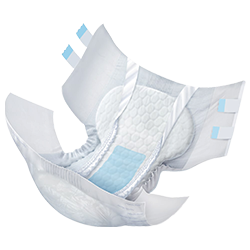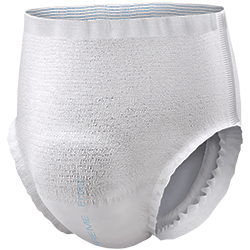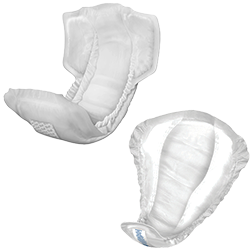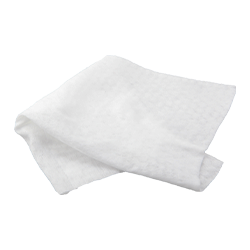Endometriosis and Incontinence: Ending the Silence

March is National Endometriosis Awareness Month
Often referred to as the “silent disease” or the “missed disease,” endometriosis affects five to 10 percent of reproductive-aged women around the world – an estimated 190 million people.1 And yet, it remains a frustratingly common disease to misdiagnose. Most frequently, women are misdiagnosed because their symptoms are similar to other conditions or because their care provider has been poorly educated on the intricacies of endometriosis.
Regular misdiagnoses include irritable bowel syndrome (IBS), appendicitis, ovarian cancer, colon cancer, pelvic inflammatory disease, fibroids, diverticulitis, ovarian cysts, and sexually transmitted diseases. And even worse, many women are told their endometriosis pain is psychosomatic.2
Currently, the only way to receive a concrete medical diagnosis of endometriosis is through surgery, and most proper diagnoses take an average of six to seven years.3
What is endometriosis?
The inside of the uterus is lined with a special layer of tissue called the endometrium. And each month that a woman doesn’t get pregnant, this lining of tissue breaks down and sheds, resulting in a period.
In those with endometriosis, tissue that looks and acts like endometrial tissue implants and grows outside of the uterus in locations throughout the pelvic cavity. Every month, this endometrial-like tissue acts the same way as the endometrium: building, breaking down, and bleeding. However, since it lives outside of the uterus, the blood has nowhere to go, causing inflammation, swelling, and scarring in the surrounding tissue and organs.
A myriad of symptoms at all ages.
Depending on where the misplaced tissue implants, patients can experience a wide variety of symptoms, including chronic pain, heavy periods, and infertility. Common problem areas in the body include – but, importantly, are not restricted to – the ovaries, fallopian tubes, the peritoneum (the lining of the abdominal cavity), bowels, and urinary tract.
Sadly, the most universal symptom of endometriosis is pain – painful periods, pain during sex, painful bowel movements, low-back pain, or pain in the legs are some of the most frequently reported sensations.
However, there are many other less-discussed yet equally life-disrupting symptoms that endometriosis sufferers endure – including bladder symptoms – even from a very young age.
While many individuals don’t receive an official diagnosis until their 30s or 40s, many report symptoms that began in their adolescence.4
In a 2015 study of teens who underwent surgery and were diagnosed with endometriosis, 52% experienced at least one genito-urinary symptom.5
How does endometriosis affect the bladder?
It’s estimated that up to 12% of people with endometriosis develop urinary tract endometriosis (UTE), which refers to endometriotic implants of the bladder, ureter, kidney, and urethra.6
Symptoms of UTE can include:
-
Frequent urinary tract infections
-
Feeling an urgent need to urinate without the ability to control it, also known as urge incontinence.
-
Pain when you have a full bladder or while urinating
-
Blood in the urine
-
Low-back pain in the kidney area
These symptoms may get worse before and during your period, and they may improve once your period is finished, but as with most things concerning endometriosis, the symptom pattern may also vary significantly from person to person.
Additionally, for some people who choose surgical treatment options for their endometriosis – whether for UTE or another type – bladder symptoms and incontinence are possible side effects of surgery.
What can you do?
First things first – always speak with a medical professional to discuss any kind of bladder or urinary symptoms before doing anything else.
Whether you have a pre-existing endometriosis diagnosis or suspect you may have undiagnosed endometriosis, a conversation with your doctor is always the first step in managing and treating your symptoms.
But in the meantime, finding the right absorbency products can make a difference in helping you live your day-to-day life a bit more normally and feel comfortable enough going out to see your doctor. Learn more about the best incontinence pads for women (and why you should never use menstrual pads as a substitute!), as well as other options to manage light to moderate incontinence symptoms. These products are an easily available, immediate solution that can help with leaks while you and your medical provider work through treatment options.
Many different treatments exist for urinary tract endometriosis – ranging from hormone therapy and over-the-counter pain medications to laparoscopic surgery and laser removal. Your care provider will be your best source of information to determine which treatment option will work best for you and your symptoms, while weighing all possible benefits and risks.
Reach out for help.
The most important thing to remember is that both endometriosis and incontinence, together and separately, are treatable and manageable with the right support and medical care.
And for anyone experiencing any kind of urinary discomfort or incontinence, know that help is available, and you are not alone. We know these sorts of symptoms can be difficult to talk about, especially for young patients, but you have nothing to be ashamed or embarrassed about.
No one should ever have to suffer in silence, and endometriosis does not have to be the “silent disease” any longer. Don’t delay asking for the help you deserve.
Sources
1 https://www.ox.ac.uk/news/2023-03-14-global-study-shows-experience-endometriosis- rooted-genetics
2 https://www.endofound.org/endometriosis
3 https://www.ncbi.nlm.nih.gov/pmc/articles/PMC9918005/
4 https://www.medicalnewstoday.com/articles/endometriosis-in-teens#in-teenagers
5 https://www.ncbi.nlm.nih.gov/pmc/articles/PMC4432718/
6 https://www.ncbi.nlm.nih.gov/pmc/articles/PMC7650710/
* Regardless of capacity, for optimal comfort and hygiene, it's important to change an absorbent product immediately after a bowel movement.












